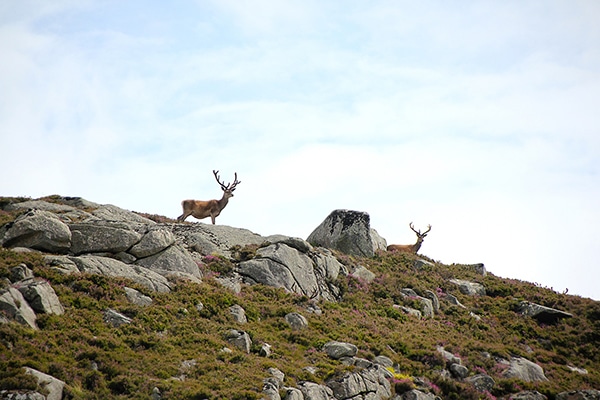
Tendering for a deer stalking lease
Here is some advice to help prepare you for the process of applying for a deer stalking lease.
Get information on the legal shooting season for mammals and birds in the UK.
Apply for funding for your project or make a donation today
Comprehensive information and advice from our specialist firearms team.
Everything you need to know about shotgun, rifle and airgun ammunition.
Find our up-to-date information, advice and links to government resources.
Everything you need to know on firearms law and licensing.
All the latest news and advice on general licences and how they affect you.
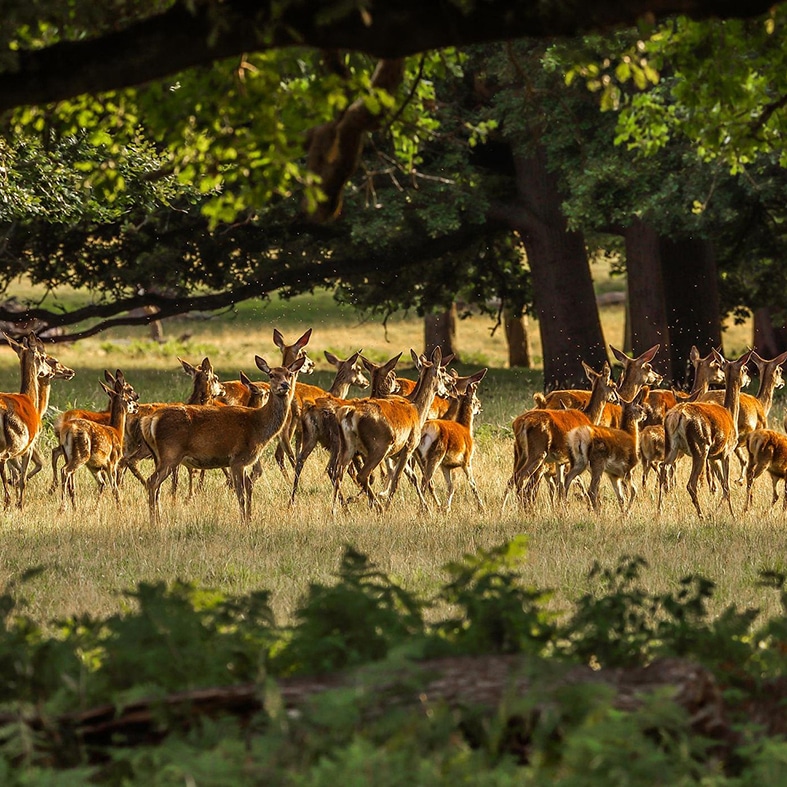

Home » Deer management » Deer management advice » Deer stalking code of practice
This Code of Practice has been produced to provide an introductory guide to deer stalking. Those engaged in deer stalking should follow the guidance described in this code. You should show respect for the countryside, have due regard to health and safety, respect animal welfare and show consideration for others who may have little knowledge of deer management.
Reading the detailed guidance in the relevant Wild Deer Best Practice Guides is also recommended, as is achieving the Deer Stalking Certificate(s) awarded by Deer Management Qualifications (DMQ).
High standards underpin public and political support for shooting, now and in the future.
Three golden rules apply:

Want to check your deer stalking knowledge, take our free online test.
The lethal control (culling) of deer is necessary to protect habitats and their associated species, forestry and agricultural crops. Deer are prolific breeders and, if numbers are allowed to increase unchecked, may become prone to starvation, disease and increased risk of deer-vehicle collisions.
In some cases deer control may be undertaken as a recreational activity, but it should always take place as part of a deer management plan which considers both the welfare of the animals and the impact they may have. While the males of some species can legally be controlled throughout the winter months, the key to any effective deer management is prioritising the target cull of female animals.
Wherever appropriate, the management plan should involve close liaison and co-operation between neighbouring landowners and stalkers. Stalkers should respect the requirements of landowners, gamekeepers, foresters, farm managers, and any other stakeholders, and liaise with them prior to going stalking. Deer stalking may take place very early in the morning or late in the evening, so any actions that might disturb third parties should be avoided.
It is your responsibility to know, and understand, the laws and Best Practice guidance relating to deer stalking. In particular, you must be able to identify deer by species, sex and age class and to know when and where it is safe and legal to shoot.
To ensure safe and humane shooting, the rifle, scope and mounts must be correctly assembled, and you must check at regular intervals that your rifle is zeroed correctly, i.e. that the bullet is striking a selected point of aim at a chosen range, using the ammunition that you intend to stalk with.
You must practise and maintain your skill with the rifle, and check at regular intervals that your rifle is still zeroed correctly. The site at which you test your rifle must be safe, with clear sightlines and a backstop that will absorb all bullets, fragments and debris over a number of shots.
The rifle must be checked for zero after a hard knock or impact, after any unaccountable miss, when a new type of ammunition is used, or if the rifle has not been shot for a prolonged period. No one should continue stalking if rifle zero is in doubt.
While zeroing the rifle it may be beneficial to practise shooting at varying distance of both shorter than, and up to perhaps twice, your normal zero distance. If practising a very short-range humane dispatch shot, be aware that the bullet will generally strike lower than your point of aim and take great care to minimise the risk of ‘splashback’ of bullet fragments and other debris.
Thermal spotters are very useful for finding heat sources, but do not rely on that image alone as a reason to shoot. Binoculars or a telescope (if appropriate) should be the main means of identifying your quarry. DO NOT use any rifle aiming device for this purpose.
The legislation on the use of thermal and night vision rifle scopes varies between countries. In England, Wales, Scotland and Northern Ireland, the use of a thermal imaging or night vision scope on your rifle to take deer during the day is not prohibited. If you have been granted a licence by the relevant authority to shoot deer at night, it will be clearly specified what rifle aiming device is permitted.
If you have been granted a licence by the relevant authority to shoot deer at night, it will be clearly specified what rifle aiming device is permitted.
Although deer are relatively large animals, the vital areas for humane and clean kills are small. No one should consider culling deer unless they can consistently shoot a group of three shots within a 10cm target at 100m.
A shot should only be taken at a range that will ensure a humane kill. Shots should never be taken at a moving or badly positioned deer, in poor visibility, through cover, or at any time when your aim is not steady. After taking a shot, always assume that you have hit the deer until you have proved otherwise by thorough searching. Always follow up and humanely dispatch a wounded deer, regardless of the time and effort involved. Be aware of the legal aspects should an injured deer cross a boundary.
Safety is paramount – never take a shot if there is the slightest doubt about safety.
Always identify your selected deer and ensure that no other animals can be wounded by your shot, either in front of or in a wide zone behind your target. Never fire at a deer unless you are absolutely sure that it is well within your capabilities.
The recommended shot is to the chest, as this is a larger vital area containing both the heart and lungs and a shot here will ensure a quick and humane kill.
The brain and spine are very small and mobile targets and for this reason head and neck shots should be avoided under normal stalking circumstances.
Under normal circumstances, you should not take a shot at a running deer (but see humane dispatch below). If in doubt over any shot, then do not fire.
Do not shoot in very poor light, especially in the evenings.
Before the shot, mark the position of the deer by reference to some adjacent feature, such as a bush, tree or rock, and then, if the deer runs off into cover you know where to start the follow-up.
Immediately after the shot, load another round, apply the safety catch and then wait. You should learn to recognise the behaviour of deer shot in different parts of the body, as this may dictate how long you should wait before following up. In most circumstances you should wait at least five minutes.
You should then approach the spot where the deer was standing, mark it, and search for signs such as hair and blood. The signs at the ‘strike’ will give a good indication of whether or where the deer is hit and how you should follow it up. Always follow any blood trail slowly, trying not to disturb it.
If at any stage you see signs of or feel that the deer is lost and possibly mobile, it is best to mark the last sign found, leave the area rather than disturb it further, then return with a trained dog.
Stalkers should own or have access to a dog trained to locate dead or wounded deer but steady to other wildlife. Tracking organisations and individuals are available to assist (links to organisations that provide this service can be found on the BASC and BDS websites).
When following up, be prepared to shoot again, if necessary, as long as it is safe, but remember that at a close range the bullet will strike below the point of aim.
A head shot is recommended for humane dispatch at very close range.
If the animal is static at longer ranges, take a chest shot but bear in mind the likely position of vital organs if the animal is lying down.
A shot at a moving deer may be acceptable when attempting to dispatch an already wounded animal but extreme care must be taken. If in doubt over any shot, then do not fire.
Venison is an excellent and healthy meat, and we should treat deer carcasses as food products throughout the whole process. All stalkers must be capable of removing all internal organs (gralloching) and inspecting a deer carcass. It is advisable to attend an appropriate training course or learn from an experienced stalker. Always maintain good hygiene standards when handling carcasses to reduce the risk of contamination.
Carcasses should be gralloched as soon as possible after shooting. The gralloch and any other waste should be disposed of responsibly and appropriately – well away from watercourses or public paths where dogs or people may come across it.
After gralloching, the carcass should be transported hygienically to a cool, dry, fly-proof store, and chilled to between 1 and 7ºC within a reasonable period of time.
Any waste brought back to or generated within a larder must be disposed of by legal means.
If the carcass is to be taken to an approved game handling establishment (AGHE), then you, or someone who was present when the deer was shot and inspected, must have a recognised game meat hygiene certificate, and a written declaration will have to be completed for each carcass. You should also be registered with your local authority as a food business. For further information, please see the Wild Game Guide produced by the Food Standards Agency/Food Standards Scotland.
| Species and sex | England & Wales | Scotland | Northern Ireland |
| Red | |||
| Stag | Aug 1 – April 30 | ** | Aug 1 – April 30 |
| Hind | Nov 1 – Mar 31 | Oct 21 – Feb 15 | Nov 1 – Mar 31 |
| Fallow | |||
| Buck | Aug 1 – April 30 | ** | Aug 1 – April 30 |
| Doe | Nov 1– Mar 31 | Oct 21 – Feb 15 | Nov 1 – Mar 31 |
| Sika | |||
| Stag | Aug 1 – April 30 | ** | Aug 1 – April 30 |
| Hind | Nov 1 – Mar 31 | Oct 21 – Feb 15 | Nov 1 – Mar 31 |
| Roe | |||
| Buck | April 1 – Oct 31 | ** | n/a |
| Doe | Nov 1 – Mar 31 | Oct 21 – Mar 31 | n/a |
| Red/sika hybrids | |||
| Stag | Aug 1 – April 30 | ** | Aug 1 – April 30 |
| Hind | Nov 1 – Mar 31 | Oct 21 – Feb 15 | Nov 1 – Mar 31 |
| Chinese water deer (only found in England) | |||
| Buck | Nov 1 – Mar 31 | n/a | n/a |
| Doe | Nov 1 – Mar 31 | n/a | n/a |
| Muntjac* | |||
| All year round | |||
| * There is no statutory close season for this species. However, it is recommended that when culling female muntjac, immature or heavily pregnant does are selected to avoid leaving dependent young. ** There is no statutory close season for male deer of any species in Scotland. | |||
The law regarding the killing and taking of deer differs throughout the UK. In both Scotland and Northern Ireland the legislation is different from that governing England and Wales.
In summary, the following are some of the more important provisions, but this is NOT to be taken as a complete or authoritative statement of the law.
Under the relevant deer legislation, you must NOT:
There are some limited exceptions to some of the above points which enable occupiers, and authorised persons, to protect their crops and to enable anyone to carry out humane dispatch of an animal to prevent suffering.
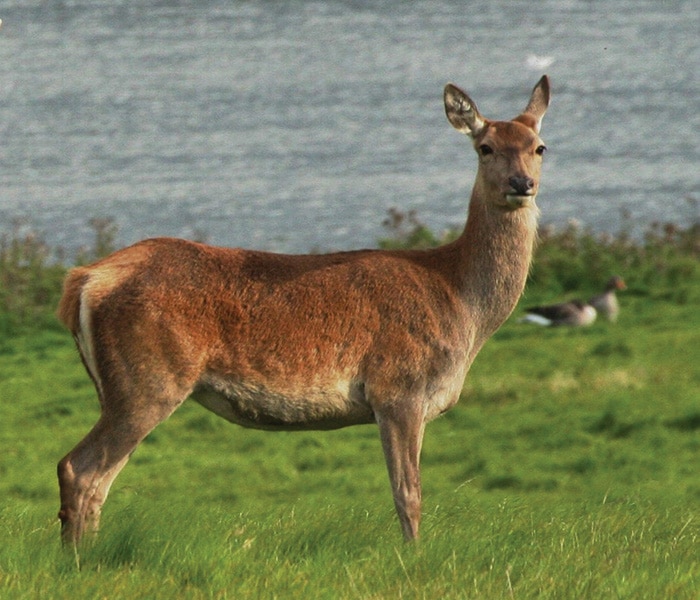 Red
Red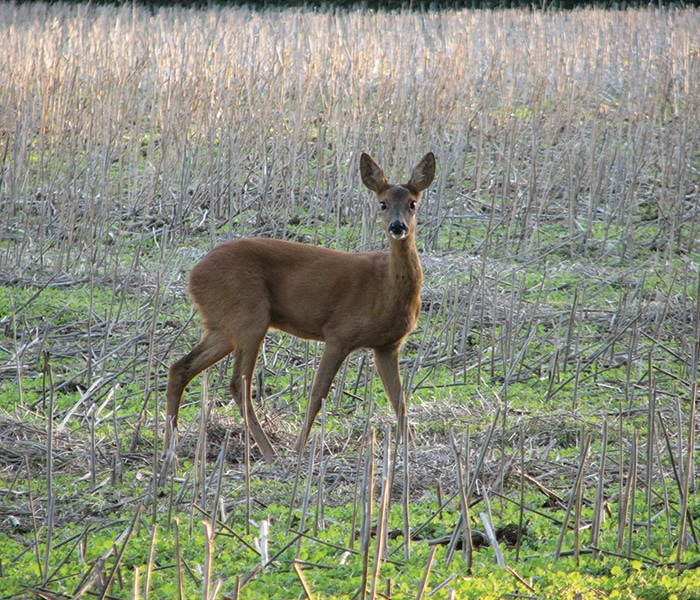 Roe
Roe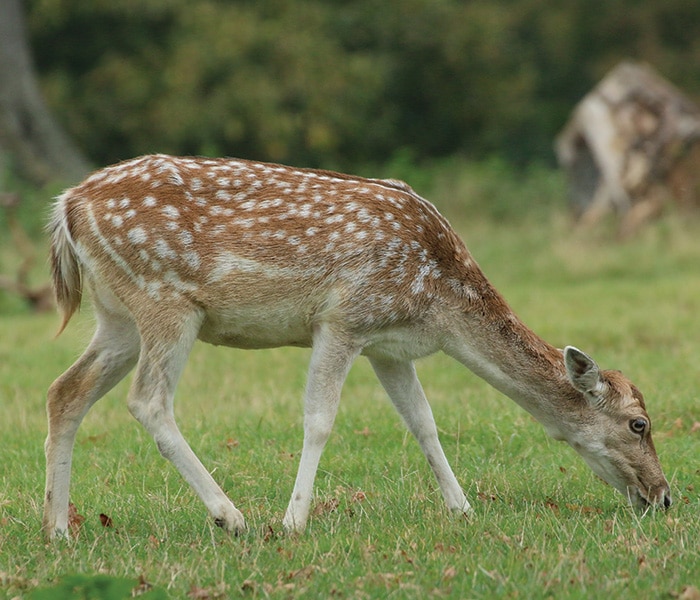 Fallow
Fallow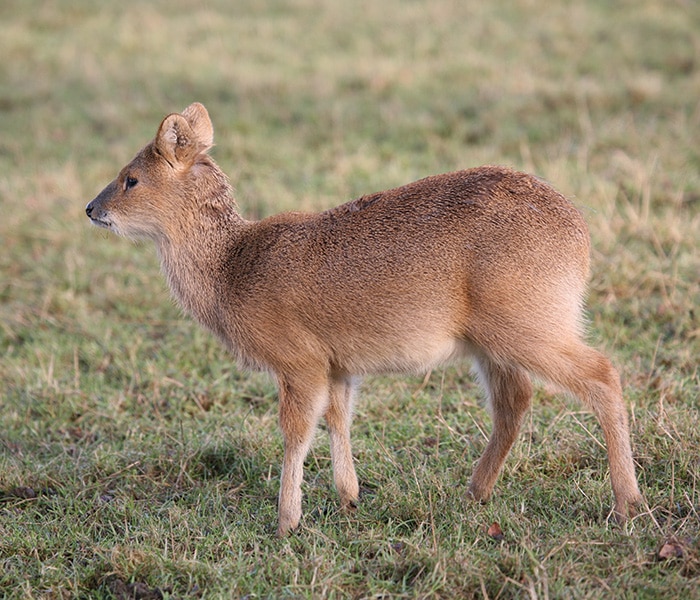 Chinese water deer
Chinese water deer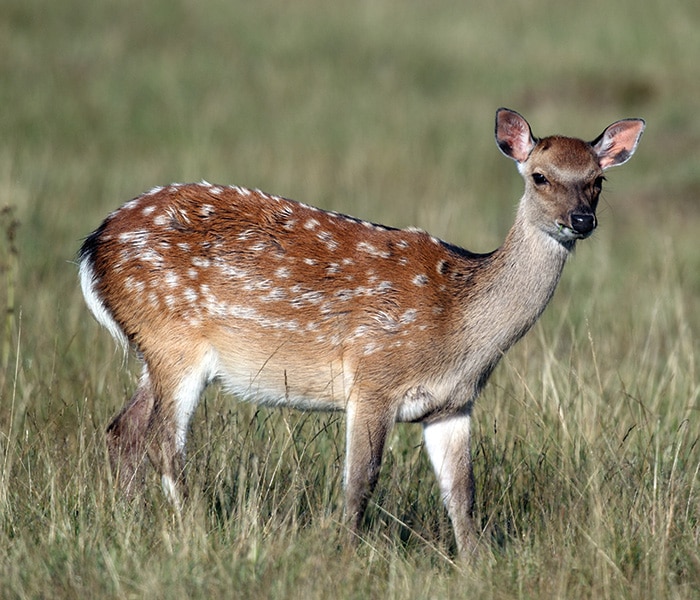 Sika
Sika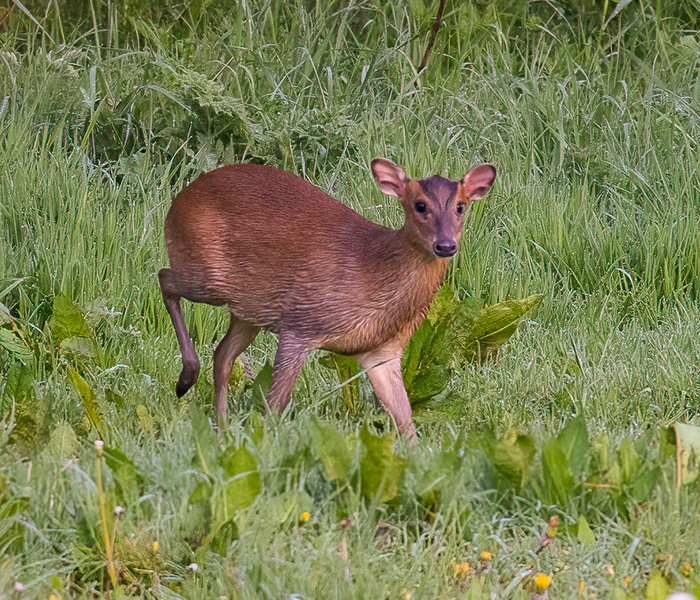 Muntjac
Muntjac| Species | Min bullet weight | Calibre | Min muzzle energy |
| Red, Fallow and Sika | |||
| England & Wales | n/a | Not less than .240 inches | 1,700 foot pounds |
| Scotland | 80 grains | n/a | 1,750 foot pounds (min muzzle velocity 2,450 feet per second) |
| N Ireland | 100 grains | Not less than .236 inches | 1,700 foot pounds |
| Roe | |||
| England & Wales | n/a | Not less than .240 inches | 1,700 foot pounds |
| Scotland | 50 grains | n/a | 1,000 foot pounds (min muzzle velocity 2,450 feet per second) |
| N Ireland | 100 grains | Not less than .236 inches | 1,700 foot pounds |
| Muntjac and Chinese water deer | |||
| England & Wales | 50 grains | Not less than .220 inches | 1,000 foot pounds |
| Scotland | 80 grains | n/a | 1,750 foot pounds (min muzzle velocity 2,450 feet per second) |
| N Ireland | 50 grains | Not less than .220 inches | 1,000 foot pounds |
You should aim to gain knowledge and experience both in the practice of stalking and in the ecology of deer. This can be gained either through recognised training courses, the guidance of an experienced stalker or, ideally, a combination of both. You can demonstrate a level of competence through attainment of the DMQ Deer Stalking Certificates 1 and 2 available from BASC and the BDS amongst other training organisations.
BASC and the BDS provide a wide variety of training related to deer and firearms use. Consult our websites for further information.
It is strongly advisable to have adequate legal liability (third party) insurance when stalking. This is often a condition of stalking permissions. Membership of BASC and the BDS currently offers various insurance options. Contact the individual organisation for further details.
This Code of Practice was produced jointly by the British Association for Shooting and Conservation and the British Deer Society.
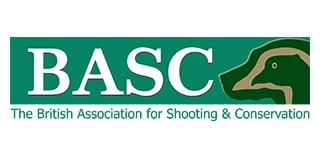 The British Association for Shooting & Conservation Marford Mill Rossett Wrexham LL12 0HL Tel: 01244 573 000 basc.org.uk | 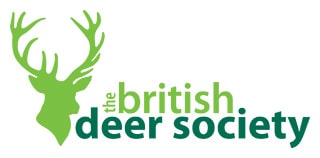 The British Deer Society The Walled Garden, Burgate Manor Fordingbridge Hants SP6 1EF Tel: 01425 655 434 bds.org.uk |
Deer Management Qualifications – dmq.org.uk
NatureScot for Scottish Best Practice – bestpracticeguides.org.uk
The Deer Initiative Partnership for England & Wales Best Practice – thedeerinitiative.co.uk
Food Standards Agency – food.gov.uk
Food Standards Scotland – foodstandards.gov.scot
UK Deer Track & Recovery – UKDTR – ukdtr.co.uk

Here is some advice to help prepare you for the process of applying for a deer stalking lease.
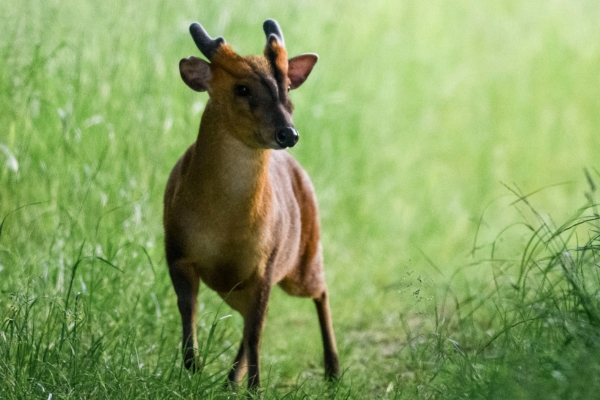
BASC’s east of England stalking scheme offers the opportunity to stalk roe, muntjac, fallow and Chinese water deer across multiple sites.
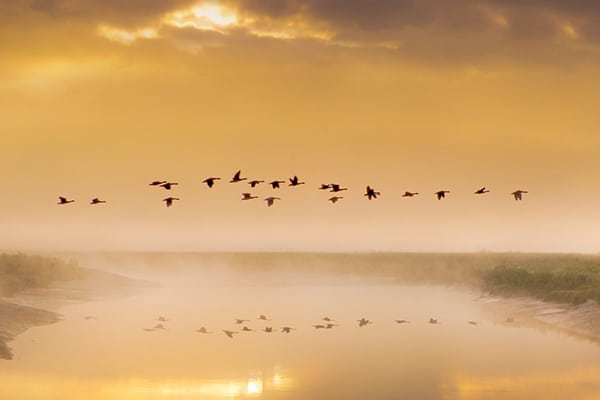
It is your responsibility to know what you can and can’t shoot, and when, so make sure you bookmark this quarry season page.
Lorem ipsum dolor sit amet, consectetur adipiscing elit. Ut elit tellus, luctus nec ullamcorper mattis, pulvinar dapibus leo.